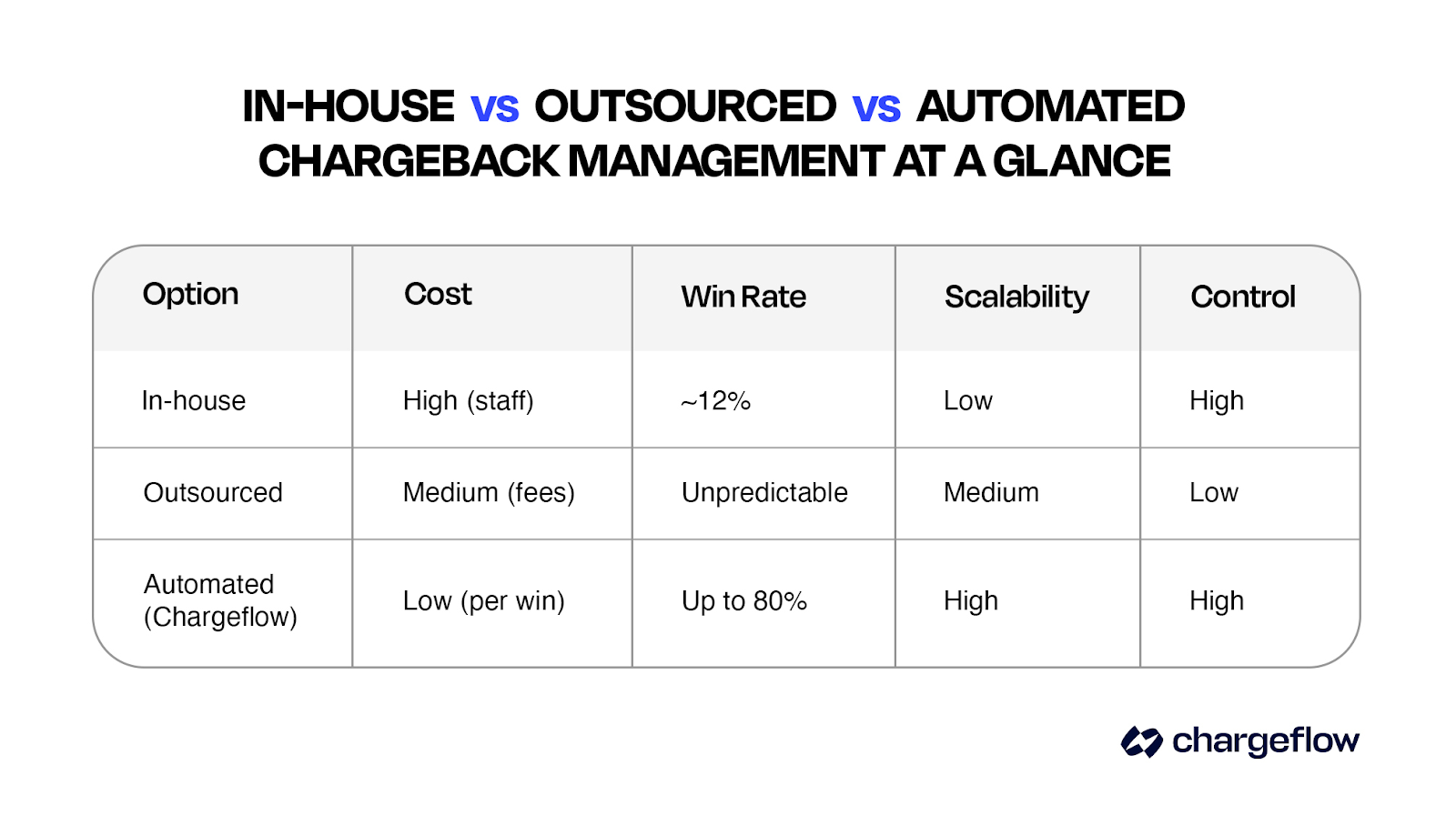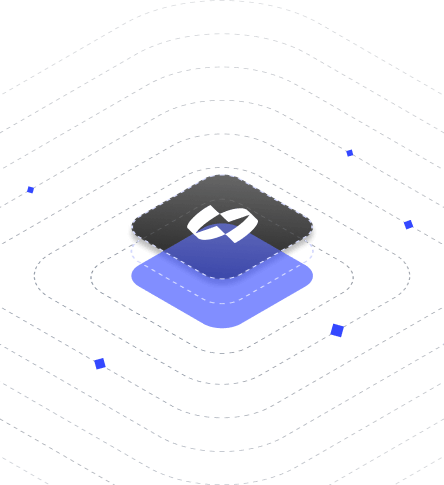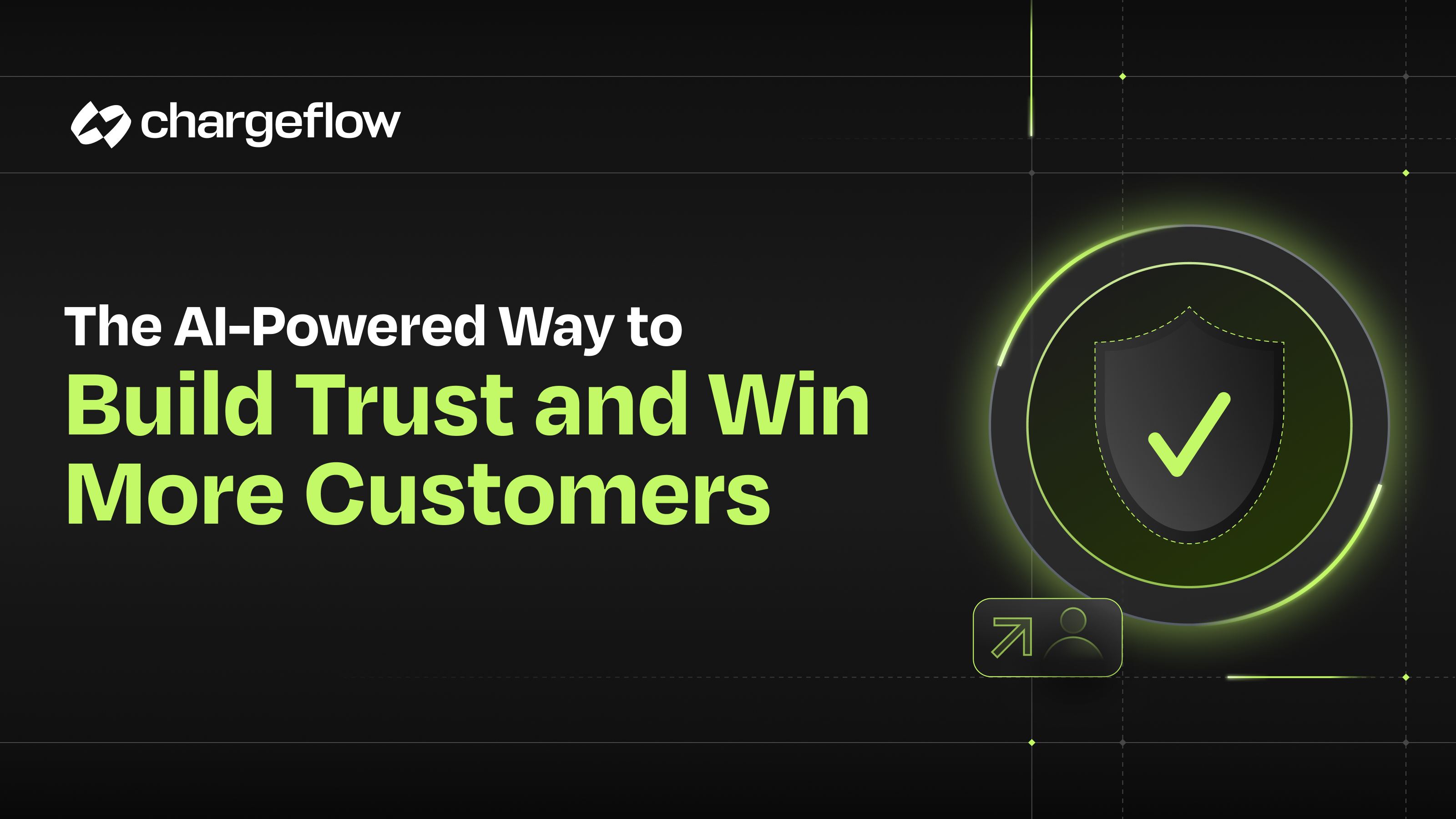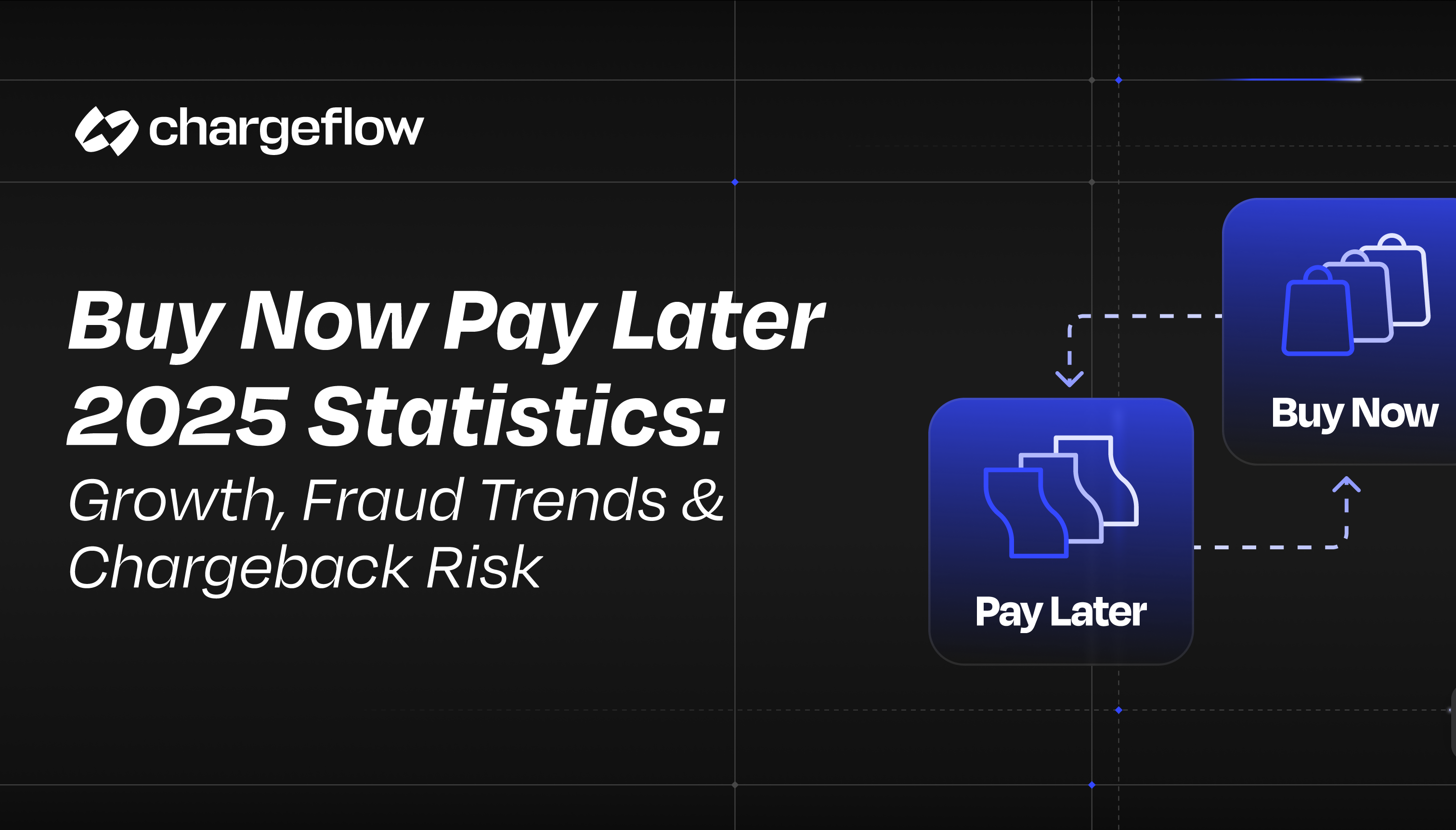The Debate About In-House, Outsourced, Automated Chargeback Management

Chargebacks?
No longer your problem.
Recover 4x more chargebacks and prevent up to 90% of incoming ones, powered by AI and a global network of 15,000 merchants.
The sustainability of your business in these times largely depends on your choice of how to track, prevent, and respond to chargebacks. As Mastercard notes, the rising volume of chargebacks has exposed the limitations of traditional dispute management processes and legacy fraud systems. Consequently, merchants are shifting from labor-intensive manual reviews to advanced solutions powered by automation and AI-driven models.
Note: In the inaugural edition of this series, we addressed the question, What Is Chargeback Management, and Why Do You Need It? Read the concluding installment: How to Choose the Right Chargeback Solution.
Imagine, for a second, that you traveled back in time, as far back as the 1300s, to witness a commercial transaction. You're looking at a woman exchanging her chicken for Silver pennies. As the seller, she knows her chicken intimately – its health, quirks, and value. This expertise could give her an advantage. She could easily outmaneuver the buyer in the exchange. Right?
That’s what we call information asymmetry. Hence, the phrase “Caveat Emptor; Buyer Beware” was encoded in most commercial laws to protect buyers and reduce post-purchase disputes.
Now, I want you to weave your way through the timelines of history to modern-day eCommerce. Observe online commerce trends and consumer behavior since the dawn of Social Media. Everything has changed! We now live in a world of Caveat Venditor: Sellers Beware.
Today, buyers have significantly more information than sellers. They can even bypass merchants and undo transactions through their banks with chargebacks. And so, sellers, not buyers, must take precautionary measures to limit exposure. The choice of chargeback management – whether in-house, outsourced, or automated – has become fundamental to business sustainability. How you track, prevent, and respond to chargebacks can make or break your success in this buyer-driven market.
Overview of Chargeback Management Strategies
In the first installment of this series, we defined chargeback management as systematic measures a business has established to prevent, track, examine, and resolve chargeback requests from a buyer’s card issuer or financial institution.
The three primary procedures businesses use to actualize that objective are:
- In-house chargeback management
- Outsourced chargeback management
- Automated chargeback management
Each of these chargeback management strategies has notable merits. But you’ve got to understand their shortcomings also. Knowing the ups and downs of each approach helps you establish the best chargeback management solution. Let’s examine them in full detail.

In-house Chargeback Management
In-house chargeback management can be loosely defined as hiring Customer Experience (CX) personnel or a team and fraud experts to handle chargeback-related issues. In this approach, your internal operations team (often CX, finance, or dedicated fraud experts) handles the entire chargeback mitigation, response, and mediation processes.
Advantages of In-house Chargeback Management
- Control over the process. With more control over the process, you can switch chargeback dispute gears as needed. For example, you can decide to dispute specific dollar amounts or tailor your approach to the needs of your business and customers.
- Flexibility in resource allocation. Since you can determine whether or not to pursue a case, in-house chargeback management can be more cost-effective in the long run than outsourcing chargeback management.
- Direct communication with customers. In-house teams can directly communicate with customers, providing pathways to gather additional information, address concerns, and resolve cases without involving external parties.
- Domain expertise. Internal teams have an accurate understanding of the company’s products, services, and business operations, which can help them present a solid argument during chargeback disputes.
Disadvantages of In-house Chargeback Management
- Resource-intensive. Compared to chargeback automation, in-house chargeback management is significantly resource-intensive, requiring dedicated staff, time, and expertise to effectively handle and resolve disputes profitably.
- Training requirements. Staff members involved in chargeback management must be well-trained to navigate the complexities of the continually changing chargeback rules, regulations, and dispute processes.
- Limited scalability. Businesses experiencing rapid transaction growth must hire additional internal team members to meet associated workloads.
- Notably lower win rates. Biases, subjective decision-making, and limited data access often result in disappointingly lower dispute win rates for internal teams.
“The chargeback process is costly and time-consuming. So, it should not be surprising that financial institutions (and merchants) are steering away from manual human review toward analysis supported by automation or AI-based models.” – Mastercard
Outsourced Chargeback Management Solution
Outsourced chargeback management is when you employ a specialist firm or third-party vendors to handle chargeback prevention and representment, allowing your business to focus on other areas of operations. The thinking on this tactic is that since the external service provider specializes in chargeback resolution, they will have the necessary expertise, tools, and resources to navigate the complex chargeback procedures. But do they? Here’s what you should know regarding merits and demerits:
Advantages of Outsourced Chargeback Management
- Better results than internal teams. Outsourcing chargebacks can be more effective than handling them in-house when said vendor possesses unquestionable expertise in the chargeback system. Some vendors also have access to industry best practices and technologies to manage the process efficiently.
- Relatively scalable. External chargeback management teams can handle many chargebacks simultaneously, making them a fairly decent option for businesses with high transaction volumes.
- Relative cost-effectiveness. Outsourcing chargeback management is more cost-effective than building full-fledged in-house solutions from the ground up. You don't have to invest in staff, technology, and training.
- Time-saving. With a third-party vendor handling your disputes, you free up time to focus on other areas of your operations, such as marketing and sales.
- Access to technology. Some external vendors also have technology tools that help through the dispute process, which may be cost-prohibitive for smaller businesses to implement independently.
"With the growth of chargebacks, traditional dispute management processes and legacy fraud systems are limited in their ability to handle them, especially in the U.S. and UK.” – Mastercard
Disadvantages of Outsourced Chargeback Management
- Less control and process oversight. With third-party vendors making decisions on cases and strategies, you give up control over the operation of chargeback disputes. This can hurt your business.
- Inconsistent results: Many outsourced chargeback companies tout specialized skills, but what they actually do is hire low-skill, cheap labor staff to manage your cases. This double negative exposes your business to more risks and makes results unpredictable.
- Compliance risk. If the vendor has compliance issues, the potential legal and financial consequences will accrue to you.
- Communication challenges. Different time zones or unique communication preferences of the external vendor may pose challenges in meeting time limits and effectively managing chargebacks.
- Cost-intensive. The opportunity cost of hiring a specialist vendor that cannot grow with rising transaction volumes leads to a negative return on investment, draining your resources.
- Dependency on third-party performance. The effectiveness of outsourced chargeback management is contingent on the performance and reliability of the third-party service provider, and any shortcomings may impact the merchant's reputation.

Automated Chargeback Management Solution
Automated chargeback management is a more modern approach to dispute mitigation. For this approach, you integrate a software solution, like Chargeflow, designed to learn your business process, understand the buyers’ journey, and act as an enhanced second brain in managing and responding to cases. Chargeback automation improves management procedures. It automates duties, including chargeback alerts, tracking, evidence collection, and dispute response.
It also helps reduce chargeback issuance. You can close loopholes, enhance customer relationships, and improve chargeback rates by identifying chargeback patterns and trends.
Yet, it’s vital to note that all chargeback automation solutions are not built the same. Choosing the right option for your business model makes all the difference.
Types of Automated Chargeback Management Solutions
There are two main options you can choose from when it comes to chargeback automation. Below, we evaluate these options with their respective pros and cons.
- Fully automated chargeback solution
A fully automated chargeback management solution is an utterly hands-off system where you onboard a SaaS product (think Chargeflow, the world’s first fully automated chargeback solution) to handle all chargeback-related issues.
Advantages of Fully Automated Chargeback Management
- Optimum operational efficiency. The system automates time-consuming and manual chargeback tasks, such as notifications, tracking, and responses, helping you regain time to focus on building your business. You also have big data to streamline operations and plan revenue.
- Cost-effectiveness. Automating chargeback management processes reduces chargeback-associated costs like chargeback fees, lost revenue, and administrative expenses. And since you only pay for cases won and not by contract, you save money as well.
- Comprehensive risk mitigation. Chargeback automation gives you robust data to pinpoint loopholes, identify dispute trends and risk centers, and proactively manage cases to minimize the risk of future disputes.
- Enhanced return on investment. By generating the most formidable representation case, automated chargeback management solutions give you quick and accurate tools to increase your win rate, fend off criminals, and retain legitimate customers.
- Ease of doing business. By winning disputes on autopilot, you keep your brand reputation intact, have better relationships with your stakeholders, and plug sales cannibalization gaps.
- Control and oversight. If you’re using Chargeflow, you have absolute control over disputes – how they’re managed and the outcome. You can achieve this by simply clicking buttons on your dashboard.

Disadvantages of Fully Automated Chargeback Management
- Reliance on technology. Automated chargeback management solutions rely on technology. If you onboard the wrong solution, the outcome will be frequent missed chargebacks, inaccurate data, and poor performance.
- False positive. Depending on the solution you onboard, the system could flag legitimate transactions as chargebacks, unnecessarily initiating disputes. That can lead to increased workload and costs for businesses.
- Hybrid automated chargeback solution
Small businesses using hybrid chargeback management complement third-party chargeback services with in-house efforts. They select transactions and chargebacks to dispute while relying on a full-service company for the actual disputes.
Advantages of Hybrid Automated Chargeback Management
- Oversight and control. You could potentially reduce your costs by choosing specific cases to pursue without losing the advantages of technical know-how and maintaining greater oversight.
- Risk mitigation. Diversifying chargeback management methods helps prevent tunnel vision or a single process dependency risk.
- Strategic focus. With a hybrid approach, businesses can focus on their core competencies while leveraging external expertise for specialized tasks.
Disadvantages of Hybrid Automated Chargeback Management
- Implementation cost. You might need to onboard multiple programs, giving your team additional bills to pay.
- Training and requirements. Using the hybrid option means you have more tools or will need to work with more agencies, and managing and coordinating those with partner programs can be difficult.
- Unreliable results. Some chargeback specialist companies use offshore unskilled or semi-skilled labor, which often compromises efficiency and turn-around time and negatively impacts win rates.
So there you have it. The ROI of your preferred option depends on how effectively your chargeback management solution meets the demands of dispute stakeholders to win cases.

The Best Chargeback Management Solution: Industry Perspectives and Case Studies
We’ve seen a meteoric rise in chargeback volumes over the past three years. A recent publication by Mastercard estimates by 2026, global chargeback transaction volumes will reach 337 million, a 42% increase from 2023 levels. The rising chargeback cases only mean one thing: more downstream costs for businesses. These fees and operational expenses hurt your balance sheet significantly.
For example, Maverick Drone Systems recently lost over $100,000 to chargebacks. Although the Minnesota-based B2B high-tech dealer has a solid reputation in the industry, such high-profile disputes mean deeper scrutiny and fines from banks. Maverick recognized they needed a tool to identify the underlying causes of the disputes to prevent future cases.
Enters Chargeflow. Upon examining historical chargeback data and patterns, it became evident that their refund policy was the primary contributor to chargeback cases. In response, Chargeflow optimized the process by establishing clear sales-final points and other policies issued to customers. Chargeflow further helped the team recover ~90% of the disputed revenue within four months! But more than revenue recovery, Maverick has recovered its relationship with the card network and banks.
You can also read more about how Wordtune won 5.4x more chargebacks, even as their chargeback volume grew by 3x, as shared by Stripe.
Conclusion
There’s no denying this. You need definite tools and strategies for preventing chargebacks and recovering lost revenue. And you must do that without jeopardizing your relationship with existing customers.
Unfortunately, the sheer number of chargeback management options in the market today makes deciding a path daunting. Choosing the wrong chargeback management solution means you’ll forever be pissing off your hard-earned money against the dispute mediation wall. Not to mention the constant hit on your operations budget due to excessive fees.
Pay attention to the pros and cons discussed above. At the very least, whatever chargeback strategy you choose must provide ease of activation, cost-effectiveness, guaranteed dispute win rate increase, seamless integration with existing systems, and full compliance with regulatory requirements.

Chargebacks?
No longer your problem.
Recover 4x more chargebacks and prevent up to 90% of incoming ones, powered by AI and a global network of 15,000 merchants.






























.png)








